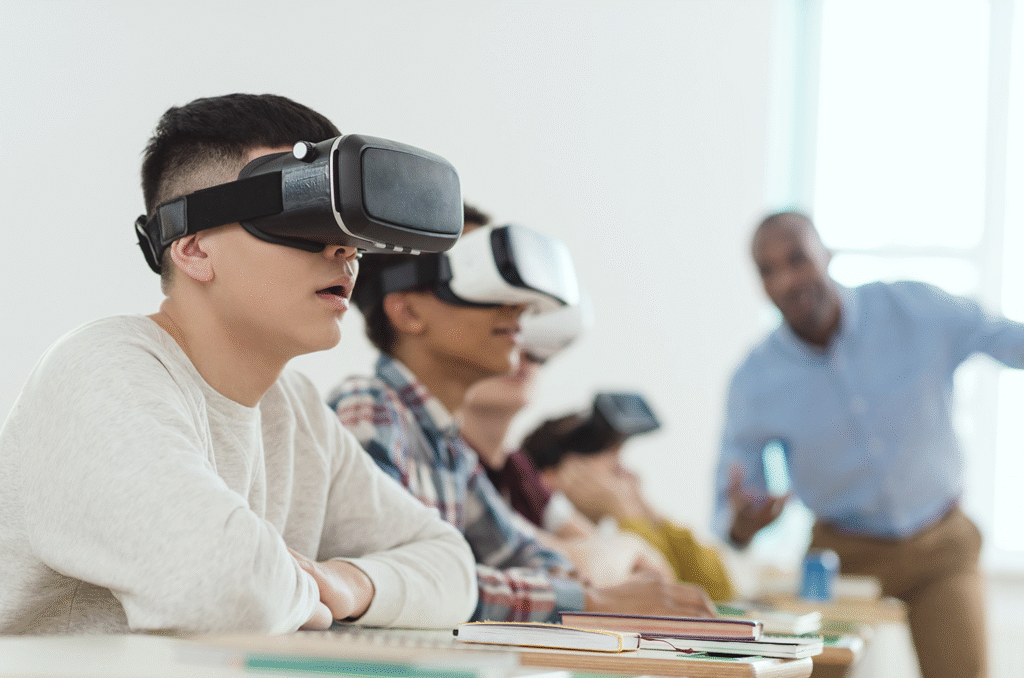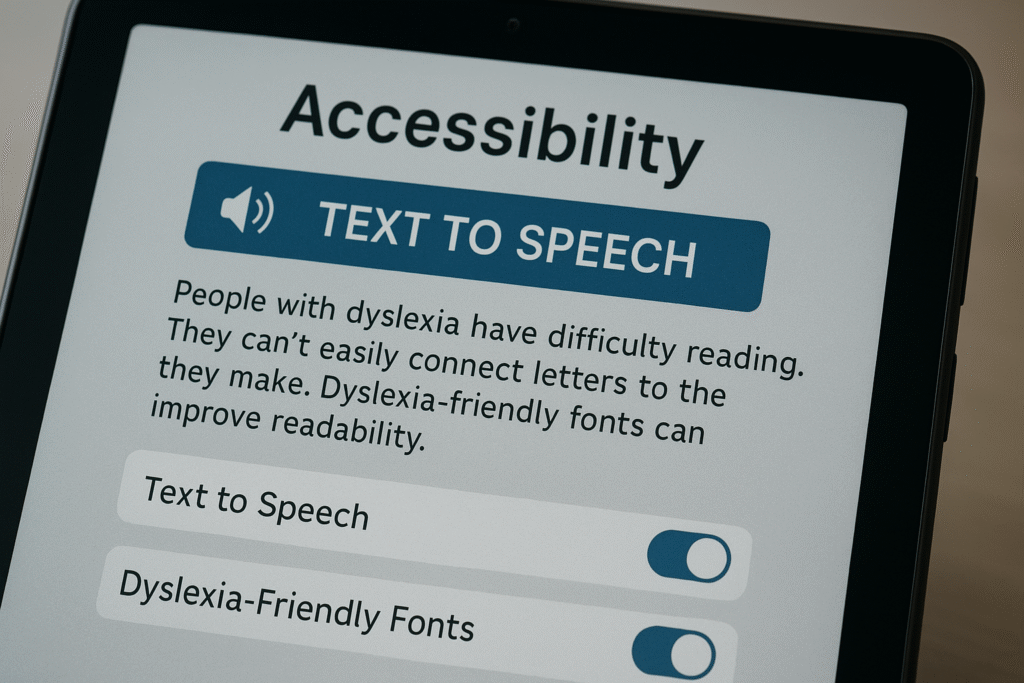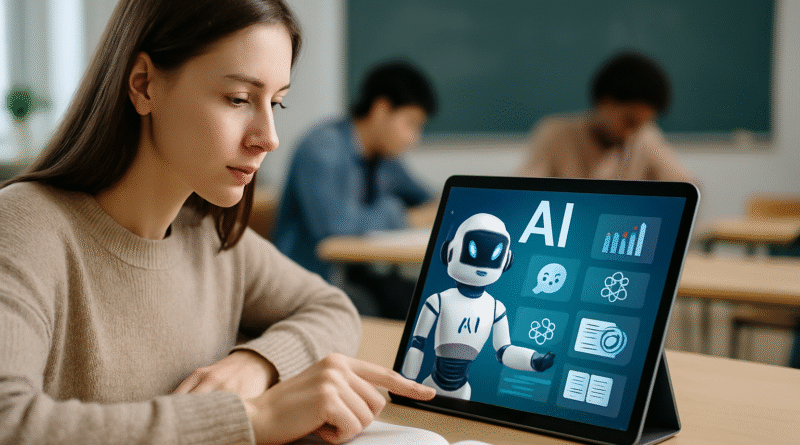Exploring AI’s Role in Personalized Learning Experiences
AI in Personalized Learning Introduction
If you’ve ever sat in a classroom thinking, “I’m lost”, while the person next to you is breezing through the lesson, you’re not alone. Traditional education has long tried a one-size-fits-all approach to learning. But here’s the truth: we don’t all learn the same way, at the same pace, or with the same preferences.
Thankfully, Artificial Intelligence (AI) didn’t get the memo.
In the age of smart assistants, customized playlists, and algorithm-powered shopping, why shouldn’t learning be just as personal? That’s where AI comes in, helping to reshape education into something responsive, intuitive, and tailored to you.
Let’s explore how AI is becoming the secret sauce behind personalized learning experiences that actually… work.
Table of Contents
Why This Matters Now
We’re living in an attention economy, a skill-based job market, and a post-pandemic world where learning is increasingly:
- Online
- Self-directed
- Non-linear
But here’s the catch:
- Students are struggling with focus, engagement, and motivation.
- Teachers are overwhelmed trying to cater to diverse needs.
- Standardized learning just isn’t cutting it anymore.
Personalized learning, powered by AI, is one of the most promising ways forward. It offers adaptive content, real-time feedback, and smarter learning paths—without needing a one-on-one tutor for every student.
Let’s dive into how it works.
1. Adaptive Learning Platforms: Smart Lessons, Smarter Students
Adaptive learning is the heartbeat of AI in education. Imagine a platform that learns how you learn.
How it works:
- AI analyzes student interactions: correct/incorrect answers, time spent, retry patterns.
- It identifies knowledge gaps.
- It customizes the lesson flow in real-time to match the learner’s skill level.
Popular tools using this:
- Khan Academy
- Duolingo
- DreamBox
- Smart Sparrow
The result?
Students no longer feel “too slow” or “too advanced” for the group. They move at their own speed, with just the right level of challenge to stay engaged.
2. Intelligent Tutoring Systems: Your AI Study Buddy
Let’s face it: not everyone has access to a personal tutor. But what if AI could simulate one?
AI tutors provide:
- Instant feedback on mistakes
- Hints and nudges instead of direct answers
- Encouragement based on effort and growth
- Continuous progress tracking
Example:
- Socratic by Google solves math problems with explanations, not just answers.
- Carnegie Learning’s AI tutors adapt tone, complexity, and approach per student.
These systems don’t just teach, they guide.
3. Learning Analytics: Turning Data Into Insight (Not Just Grades)
Imagine if teachers had a dashboard that showed:
- Who’s falling behind, and why
- Which topics are most confusing
- When students are most engaged or distracted
AI makes this possible through learning analytics.
What’s measured:
- Click patterns
- Response time
- Retry frequency
- Session duration
- Engagement spikes and drops
Teachers then get actionable insights, helping them tailor instruction instead of guessing what’s working.
Students benefit too. Many platforms now offer self-reflection tools where learners track their own growth.
It’s no longer about memorizing for tests, it’s about understanding how you learn best.
4. Personalized Content & Assessments: Tailored Like a Netflix Queue
Ever feel like the same test is given to 30 kids with wildly different learning levels? AI can fix that.
AI-generated assessments:
- Adjust difficulty in real-time (adaptive testing)
- Offer different formats (visual, audio, interactive)
- Create personalized quizzes based on past mistakes
Content personalization examples:
- Visual learners get diagrams and videos
- Readers get detailed text explanations
- Strugglers get simplified analogies or extra practice
No more copy-paste learning. Now, education actually meets you where you are.
5. Voice, AR, and Multimodal Learning: Engaging All the Senses

AI isn’t just text on screen. It’s experiential.
Examples:
- Voice-based AI like Alexa or Google Assistant can quiz you on vocabulary, math, or historical facts.
- Augmented reality (AR) overlays bring complex subjects like anatomy or chemistry to life.
- Interactive simulations let students “experience” Newton’s laws or explore a 3D cell.
This multimodal learning keeps different types of learners engaged and helps abstract topics become tangible.
It’s like the difference between reading about an airplane… and actually flying one in a simulator.
6. Emotional AI & Engagement Tracking: Learning With Empathy
Yes, AI can now sense your mood. Seriously.
Using webcams and behavioral analysis, emotional AI detects:
- Confusion or frustration (e.g., furrowed brows, long pauses)
- Boredom or distraction (eye movement, lack of interaction)
- Engagement peaks
What happens next?
- The system adapts tone or pace
- Offers motivation prompts or quick breaks
- Alerts teachers if consistent struggle is detected
This isn’t surveillance. It’s about learning to respond to emotional signals, which traditional systems often miss.
7. AI-Powered Language Learning: Talk Like a Local (Without the Embarrassment)
Learning a new language is scary. AI makes it fun and forgiving.
Apps like:
- Duolingo
- Rosetta Stone
- Babbel
- Speak
They now:
- Listen to your pronunciation and correct it gently
- Adjust lessons based on weak spots
- Use spaced repetition (AI memory hacks!)
- Gamify progress so you stay motivated
Learning a language used to take years. Now, you can build fluency through micro-lessons during your commute.
8. AI for Special Education: Unlocking Learning for All

Every learner deserves the tools to thrive, especially those with learning disabilities.
AI helps by:
- Providing text-to-speech or speech-to-text support
- Breaking down instructions into simpler chunks
- Offering voice-guided navigation for visually impaired students
- Tracking progress with non-traditional benchmarks
Example:
Microsoft’s Immersive Reader helps students with dyslexia by adjusting font spacing, reading pace, and color contrast.
AI makes learning more inclusive, empathetic, and empowering.
FAQ
Q1: Will AI replace teachers in the future?
A1: Nope. AI enhances teaching by handling repetitive tasks, offering insights, and providing personalized support. But the human connection, encouragement, and creativity? That’s still the teacher’s superpower.
Q2: Is personalized learning with AI only available to wealthy schools?
A2: It’s getting more accessible. Many tools offer freemium models or government-sponsored access. The goal is to scale equity, not privilege.
Q3: What about data privacy?
A3: Leading AI education tools follow strict privacy laws like GDPR and COPPA. But parents, schools, and learners must still stay informed and vigilant.
Final Thoughts & CTA
AI isn’t just making learning easier. It’s making it more human, by responding to real needs, adapting to individual journeys, and offering support when and how it’s needed most.
The classroom of the future isn’t filled with robots. It’s filled with learners who finally feel seen, understood, and empowered, thanks to the quiet magic of algorithms working behind the scenes.
So whether you’re a student, teacher, parent, or lifelong learner, one thing’s clear:
Personalized learning isn’t a privilege anymore. It’s becoming the new standard, and AI is the engine behind it.
Want to explore more breakthroughs in smart education and AI tools? Stick around at aihunterguides.com, where we decode tech, elevate insight, and bring the future a little closer to home.
